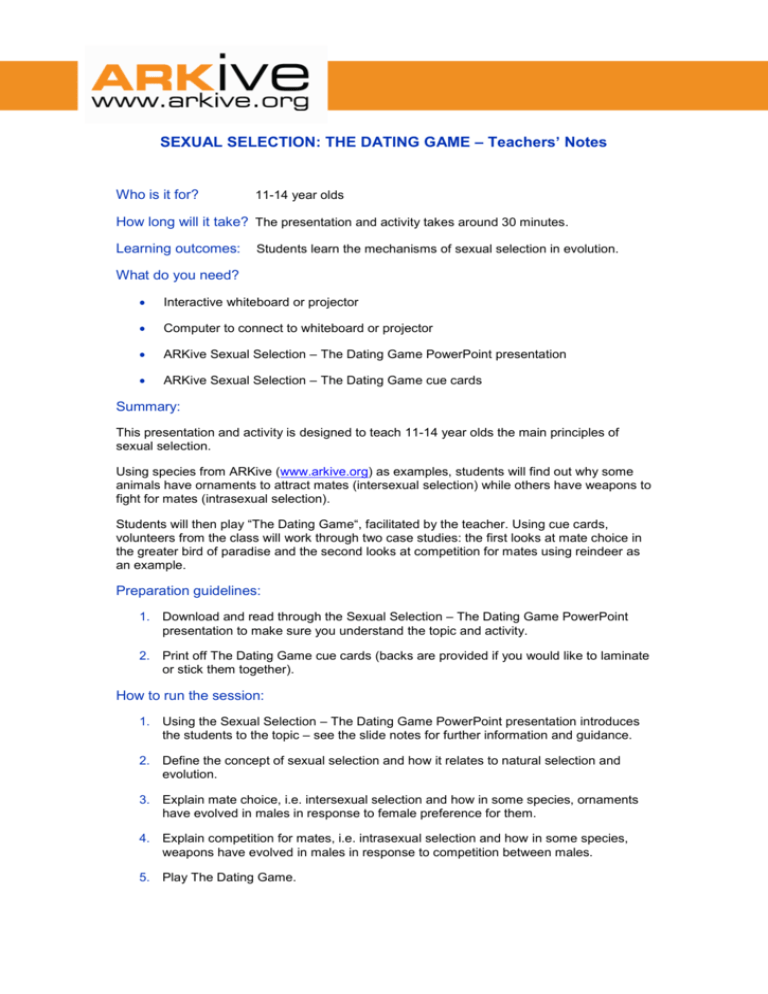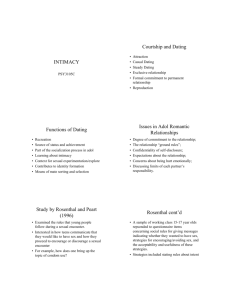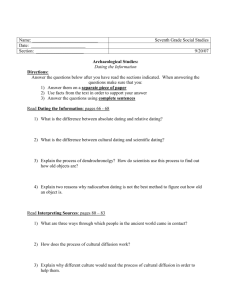sexual selection – the dating game
advertisement

SEXUAL SELECTION: THE DATING GAME – Teachers’ Notes Who is it for? 11-14 year olds How long will it take? The presentation and activity takes around 30 minutes. Learning outcomes: Students learn the mechanisms of sexual selection in evolution. What do you need? Interactive whiteboard or projector Computer to connect to whiteboard or projector ARKive Sexual Selection – The Dating Game PowerPoint presentation ARKive Sexual Selection – The Dating Game cue cards Summary: This presentation and activity is designed to teach 11-14 year olds the main principles of sexual selection. Using species from ARKive (www.arkive.org) as examples, students will find out why some animals have ornaments to attract mates (intersexual selection) while others have weapons to fight for mates (intrasexual selection). Students will then play “The Dating Game“, facilitated by the teacher. Using cue cards, volunteers from the class will work through two case studies: the first looks at mate choice in the greater bird of paradise and the second looks at competition for mates using reindeer as an example. Preparation guidelines: 1. Download and read through the Sexual Selection – The Dating Game PowerPoint presentation to make sure you understand the topic and activity. 2. Print off The Dating Game cue cards (backs are provided if you would like to laminate or stick them together). How to run the session: 1. Using the Sexual Selection – The Dating Game PowerPoint presentation introduces the students to the topic – see the slide notes for further information and guidance. 2. Define the concept of sexual selection and how it relates to natural selection and evolution. 3. Explain mate choice, i.e. intersexual selection and how in some species, ornaments have evolved in males in response to female preference for them. 4. Explain competition for mates, i.e. intrasexual selection and how in some species, weapons have evolved in males in response to competition between males. 5. Play The Dating Game. 6. ROUND ONE – the greater bird of paradise: Ask for five volunteers. Designate one student as the host, one as the female greater bird of paradise and three as male greater birds of paradise. Ask the host to read out the first card and introduce the contestants. The “female” should then ask each of the questions on her card to each of the “male” contestants (e.g. Question 1 to No.1, No.2 then No.3). Each “male” then reads out the response on his card. The host then reads out the final card, summarising the answers and asking the audience to vote on the best male for the female. 7. ROUND TWO - reindeer: Ask for four volunteers. Designate one as the host and three as male reindeer. Ask the host to read out their card to introduce the male contestants. The host then reads out the questions on the second card. The first male contestant to answer each question correctly gets a point. At the end of the quiz, the male with the most points wins the female reindeer. 8. Summarise the session, using the discussion points as further talking points. Suggestions for extension activities: Ask students to research and make an annotated poster about a species on www.arkive.org in which competition for mates or mate choice has resulted in the evolution of weapons or ornaments in males. Information on the differences between males and females of the species and any unique mating rituals they may have as a result of their weapons/ornaments needs to be included.








